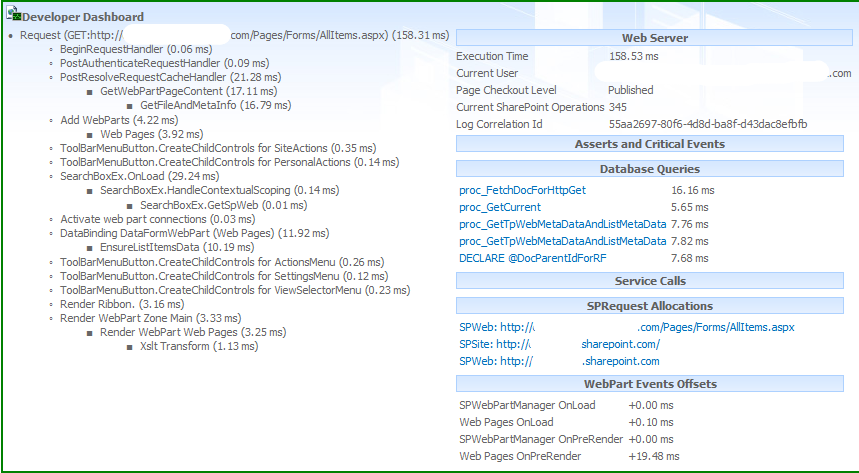Developer panel in SharePoint 2010
SharePoint 2010 (also referred to as SharePoint Foundation 2010) has a built-in tool for monitoring the performance and loading speed of individual pages.
In this article, we will look at ways to enable the developer panel, as well as its appearance.
There are 3 ways to enable the developer panel
The developer panel can be in one of three states that can only be switched using STSADM
The power button can be found near the field with the user profile settings (Fig. 1.)

Fig. 1. Location of the developer panel
After clicking on the corresponding button on the page, the developer panel appears (Fig. 2)

Fig. 2. Appearance of the developer panel
As you can see in Fig. 2, the panel displays the loading time of all the components of the page, including the processing time of the web server and database queries.
The tool clearly demonstrates components that slow down page loading.
It is also convenient that there is a frame around the panel that can be of three colors:
Thus, the developer panel allows you to find components on the page that interfere with its fast loading.
In this article, we will look at ways to enable the developer panel, as well as its appearance.
- Turn on the developer panel
- Using PowerShell
- Using STSADM
- Using the SharePoint API
- Appearance of the developer panel
Turn on the developer panel
There are 3 ways to enable the developer panel
Using PowerShell
$DevDashboardSettings = [Microsoft.SharePoint.Administration.SPWebService]:: ContentService.DeveloperDashboardSettings;
$DevDashboardSettings.DisplayLevel = ‘OnDemand’;
$DevDashboardSettings.RequiredPermissions =’EmptyMask’;
$DevDashboardSettings.TraceEnabled = $true;
$DevDashboardSettings.Upd ate() Using STSADM
The developer panel can be in one of three states that can only be switched using STSADM
- Included
STSADM –o setproperty –pn developer-dashboard –pv on- Off
STSADM –o setproperty –pn developer-dashboard –pv off- On demand
STSADM –o setproperty –pn developer-dashboard –pv ondemandUsing the SharePoint API
using Microsoft.SharePoint.Administration;
SPWebService svc = SPContext.Current.Site.WebApplication.WebService;
svc.DeveloperDashboardSettings.DisplayLevel=SPDeveloperDashboardLevel.Off;
svc.DeveloperDashboardSettngs.Update(); Appearance of the developer panel
The power button can be found near the field with the user profile settings (Fig. 1.)

Fig. 1. Location of the developer panel
After clicking on the corresponding button on the page, the developer panel appears (Fig. 2)

Fig. 2. Appearance of the developer panel
As you can see in Fig. 2, the panel displays the loading time of all the components of the page, including the processing time of the web server and database queries.
The tool clearly demonstrates components that slow down page loading.
It is also convenient that there is a frame around the panel that can be of three colors:
- Green if page loading speed is excellent and there are no performance issues
- Yellow if there are slight delays in loading
- Red if page loading speed is critically slow
Thus, the developer panel allows you to find components on the page that interfere with its fast loading.
